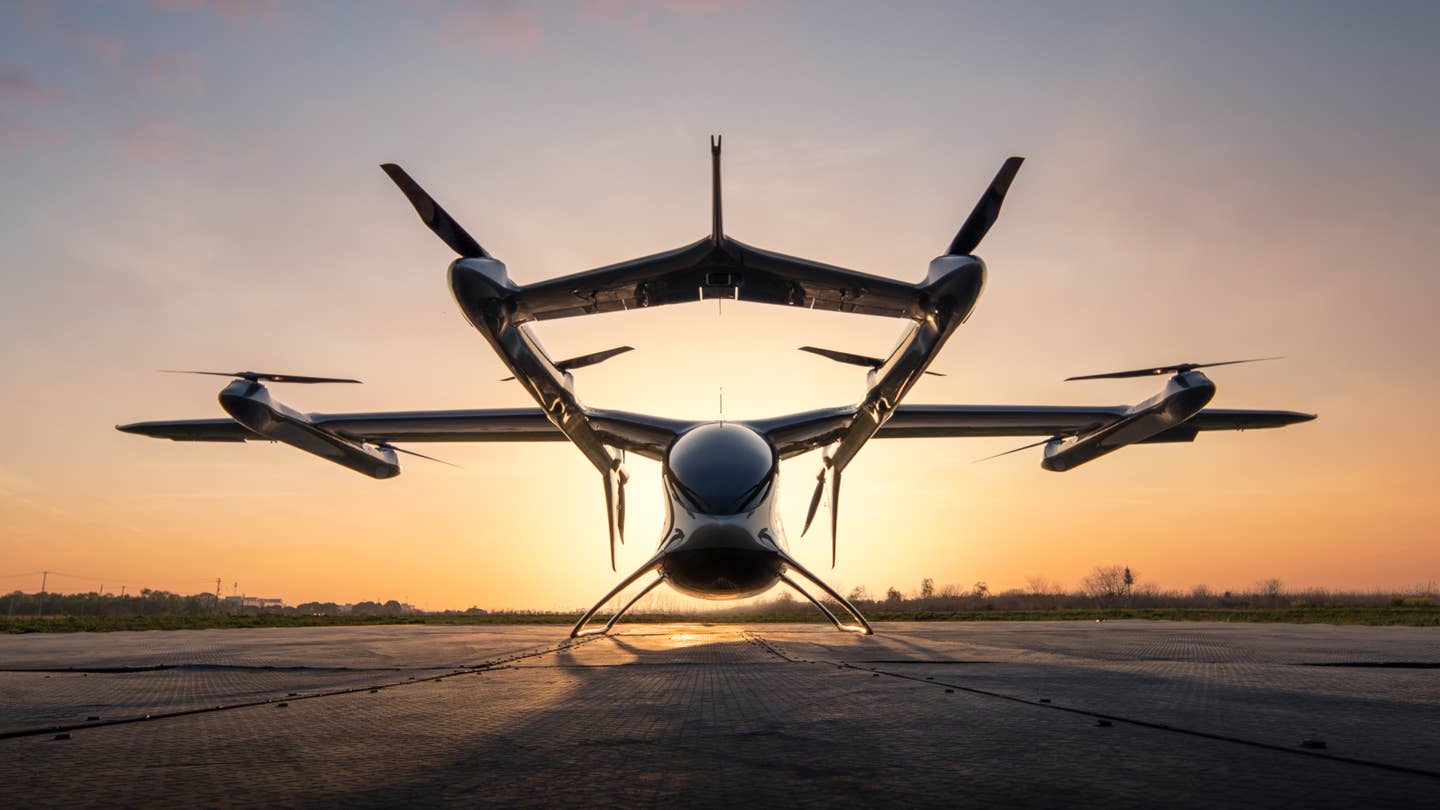AutoFlight to Demonstrate Record-Breaking eVTOL at 2024 Paris Olympics
Chinese firm’s Prosperity I aircraft recently completed the longest eVTOL flight on record.

A front view of AutoFlight’s long-range Prosperity I eVTOL. [Courtesy: AutoFlight]
The record for the longest electric vertical takeoff and landing (eVTOL) aircraft flight does not belong to Joby Aviation, Archer Aviation, or Volocopter, the three companies topping SMG Consulting’s latest Advanced Air Mobility (AAM) Reality Index.
Instead, that distinction is held by AutoFlight, which has sneakily climbed to the No. 8 spot in SMG’s rankings in recent months. In February, it eclipsed Joby's 2021 high-water mark with a 155-mile jaunt near its headquarters in China. Now, Autoflight, which only began focusing on passenger eVTOL in 2021, is ready to put more eyes on its aircraft.
At the Paris Air Show on Thursday, AutoFlight announced the signing of a memorandum of understanding (MOU) with Groupe ADP, a Paris-based international airport operator, to conduct experimental flights of its Prosperity I eVTOL at the 2024 Paris Olympic and Paralympic Games.
One of several eVTOL manufacturers set to demonstrate air taxi technology at the global event, AutoFlight will fly its long-range aircraft out of Pontoise vertiport, a dedicated test bed for AAM technologies.
Developed by Skyports and Groupe ADP with the backing of several aviation bodies and regional authorities, the airfield has been outfitted with AAM infrastructure such as takeoff and landing zones, a passenger terminal, and a fully equipped maintenance hangar.
“Pontoise vertiport, equipped with exceptional infrastructure and facilities, serves as an optimal platform to support electric, innovative aircraft,” said Edward Arkwright, Groupe ADP’s deputy CEO. “This collaboration resonates with our commitment to delivering sustainable and efficient aircraft infrastructure as we continue to pave the way for the future of aviation.”
AutoFlight and Groupe ADP did not provide many details of the planned experimental flights. But the partners did note they will be piloted and contribute to the development of infrastructure for five additional Paris Region vertiports, scheduled to be completed by 2024.
“We aim to showcase the immense potential of [AAM,]” said Mark Henning, managing director for AutoFlight Europe and former program manager for Airbus. “Our 250 km-range eVTOLs will operate in real-world conditions, highlighting their capabilities in urban environments and their invaluable contribution to sustainable logistics and mobility.”
AutoFlight’s Prosperity I is an all-electric, lift-plus-cruise aircraft built to fit four passengers and a pilot. Powered by 10 lift propellers and three push propellers with a battery capacity of 160 kWh, it can carry payloads of 770 pounds as far as 155 miles (about 134 nm) at 124 mph (around 107 knots), all on a single charge. That makes it one of the rangiest known eVTOL designs. But Prosperity I is also fairly quiet, producing 65 dBA—roughly the volume of a normal conversation—while hovering.
Until this week, not much was known about the interior of the aircraft. But at the Paris Air Show, AutoFlight showcased its sleek, eco-friendly design for thousands of attendees. Prosperity I’s interior was crafted by Frank Stephenson, the architect behind vehicles from marquee automakers such as Ferrari, Maserati, McLaren, Ford, BMW, and Mini.
In 2011, Motor Trend magazine dubbed the Moroccan-American “one of the most influential car designers working in the industry.”
"Designing the interior of the Prosperity I has been a phenomenal journey,” Stephenson said. “Our aim was to create an environment that evokes a sense of safety, comfort, and innovation…The welcoming interior has been achieved through the innovative application of natural organic shapes, new soft touch materials, and a clever system of interior mood lighting.”
Based on Stepheson’s description and images of Prosperity I’s interior shared with FLYING, the aircraft looks and sounds like a luxury sedan for the skies. Interestingly, though, it’ll be relatively cheap for a new aircraft—Prosperity I is expected to cost around $150,000.
But according to AutoFlight founder and CEO Tian Yu, the company already has 670 orders for the eVTOL, all in Asia. That includes an agreement with Singapore's EvFly for the purchase of 205 passenger and cargo aircraft, which will be operated in Asia, Africa, and the Middle East.
However, the Chinese manufacturer will first need to tackle certification. The Prosperity I model on display in Paris is expected to be AutoFlight’s final proof-of-concept design before it turns to a type-conforming prototype for the Civil Aviation Administration of China (CAAC), Yu said this week.
The firm will first attempt to certify an uncrewed cargo version of Prosperity I, the Carryall, for which the CAAC has already provided a basis for certification. The Carryall is nearly identical to its crewed counterpart aside from its increased payload capacity (around 1,100 pounds) and will achieve CAAC certification by 2024, according to Henning.
Prosperity I CAAC certification is expected two to three years later, followed by European Union Aviation and Safety Agency approval at a greater safety level (one accident per one billion flight hours) one to two years after that. FAA certification would come next.
That’s a lengthy flight path. But AutoFlight in 2022 said it had completed more than 10,000 takeoffs and landings with Prosperity I prototypes, including in adverse weather conditions. That success has apparently bred confidence as Yu said the firm is constructing a new factory that will eventually be able to produce 1,000 aircraft per year.

Subscribe to Our Newsletter
Get the latest FLYING stories delivered directly to your inbox






